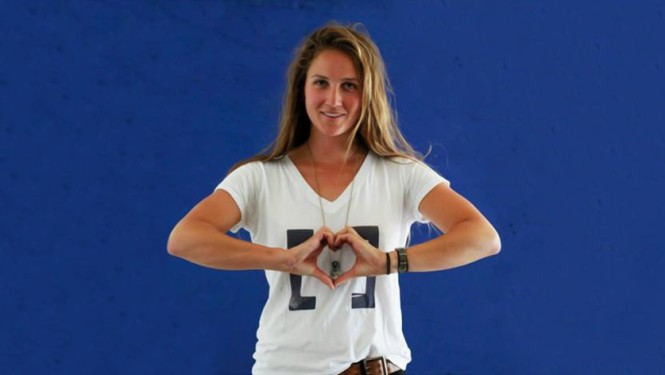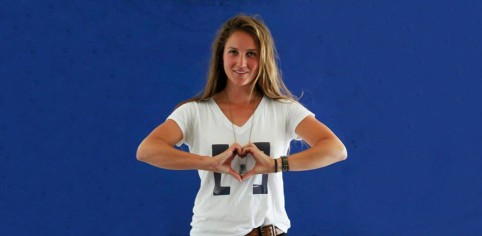
We Burners of the San Francisco office have a story we like to tell. Burning Man is not just a week in the desert, the story goes. It’s not just the 40 regional Burns around the world, either. Burning Man is a global culture now, living, working, playing and growing year-round in the cities and hinterlands formerly known as the Default World. Here’s a new chapter in that story.
The [freespace] movement expects to launch in 10–13 new cities around the world in June. Each [freespace] is an open building that provides freedom, community, and permission for makers, hackers and artists of all stripes, like an urban version of the “permission engine” we have on the playa. The buildings are donated essentially for free, just to see what people will do with them. Turns out they make art, hold fashion shows, host lectures, and make stuff for Burning Man, and they do it all in decommodified 10 Principles style.
And during this year’s World Cup — arguably the most global cultural phenomenon there is — [freespace] participants will tell the whole world what they’ve been up to.
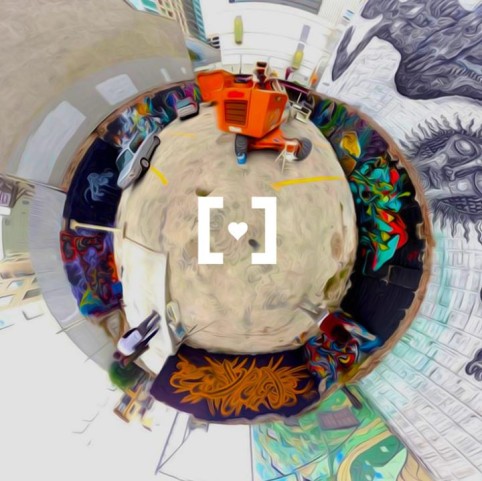 The World Cup is “the closest thing we have to a cultural collective consciousness,” Mike Zuckerman, one of the [freespace] co-founders, told me on a recent visit to Burning Man HQ. 3.6 billion people — that’s half the planet, mind you — are expected to tune in at some point. A billion human beings will watch the final game together. [freespace] plans to hack this phenomenon with a “People’s Halftime Show.”
The World Cup is “the closest thing we have to a cultural collective consciousness,” Mike Zuckerman, one of the [freespace] co-founders, told me on a recent visit to Burning Man HQ. 3.6 billion people — that’s half the planet, mind you — are expected to tune in at some point. A billion human beings will watch the final game together. [freespace] plans to hack this phenomenon with a “People’s Halftime Show.”
On June 12, during halftime of the first game, [freespace] will release a video in which the various locations will introduce themselves to the world. During the final on July 13, they’ll release another video showing what they’ve done in that month. There is no official World Cup halftime show. A billion people all focused on the same thing will have a 15–20 minute lull, and [freespace] will drop some Burnerly beauty right into that gap.
Zuckerman calls it “leading with culture,” drawing people in with cultural symbols that already mean something to them and then taking that opportunity to blow some minds. It started with murals on a SoMa warehouse in San Francisco. One year later, [freespace] is hacking a live tournament enjoyed by half of Earth.
The Story of [freespace]
[freespace]’s first birthday is June 1. It launched as part of the National Day of Civic Hacking, which takes place this year on May 31. Last year, the founders of [freespace] said, screw it, let’s do a whole Month of Civic Hacking. They opened the doors of [freespace] San Francisco that month, and amazing things ensued. The prototype [freespace] ended up running for three months with crowd-funded rent money. The model gathered international attention, and now it’s time to level up.
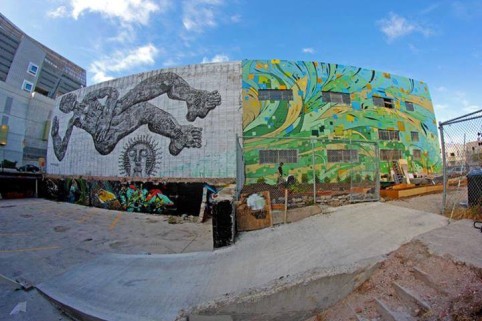
The German [freespace] has declared this June [inter]national Month of Civic Hacking. As the World Cup rolls on, the 10–13 new [freespace]s will each transform their urban environments in their own way. To get a sense of the uniqueness and flexibility of the [freespace] model, compare these examples:
Paris
A 20-year-old microfinance student named Marie was couch surfing in Cambodia when she met Beth from [freespace] San Francisco and learned about the model. She founded [freespace Paris] in Silicon Sentier upon her return. Just like mid-Market in San Francisco, where this year’s SF [freespace] will be, this former textile district had been reimagined as a haven for tech startups, a history that has proven to be fertile soil for a [freespace].
During Fashion Week last year, [freespace Paris] held a Fashion Hack, sourcing everything it needed for a fashion show from social media, including volunteers, 3D-printed shoulder pads, and Google Glass. They held the event for free. Since then, the team has presented at the EU parliament and met with microfinance pioneer Muhammad Yunus. They got this year’s space for free, got a grant to cover costs, have built a team of 15, and will operate through June, July, and August completely independently.
Philippines
Sam Bloch has done humanitarian relief work all around the world, working as operations director of Burners Without Borders. Now he’s the founder and executive director of Haiti Communitere. In the post-disaster zone aided by Philippines Communitere, he and other Burners are setting up a [freespace] in the Philippines to be a maker space and media resource center. They’ve all been on the Fractal Nation build crew at Burning Man, so they can surely build amazing things in hectic circumstances. The Philippines [freespace] will screen the World Cup for free.
Barcelona
The [freespace] in Barcelona was incubated at the Burning Man European Leadership Summit, which Zuckerman attended. Barcelona is a mess economically, with vast youth unemployment. The city government gets the revitalizing potential of [freespace] and will support it as a fab lab maker city paradise.
Detroit
Detroit is kind of a bizarro-Barcelona. While the economic situations are similarly dire, the Detroit city government is too shellshocked to get involved with radical ideas like [freespace]. So revitalization efforts have been popping up independently. Alex Ebert, founder of SecondGov, will be opening a [freespace] in Detroit thanks to the Department of Alternatives, a collective workspace that has donated its former facility to the cause.
San Francisco
This year’s [freespace] in SF will be at 6th and Market, a rough area near where Burning Man’s headquarters used to be. It’s a street-level space surrounded by restaurants, which Zuckerman hopes won’t have a deterring effect on people coming by to take advantage of the free-as-in-$0.00 part of [freespace]. [freespace SF] will be the operations hub for the whole Month of Civic Hacking.
It’s mostly run by a new team. After last year’s success, much of the core team has moved on to even greater glory. “I’m a little worried about San Francisco,” Zuckerman says. Between the new neighborhood and the loss of experienced leaders, SF will test the mettle of the [freespace] idea as a multi-year project. But the promise of a fresh team appeals to Zuckerman. “It’s really the model I’d love to see: Come participate in a [freespace], level up, and move on.” It’s exciting to think of [freespace] as a platform for launching civic leaders. We’ll just have to see how the movement handles turnover.
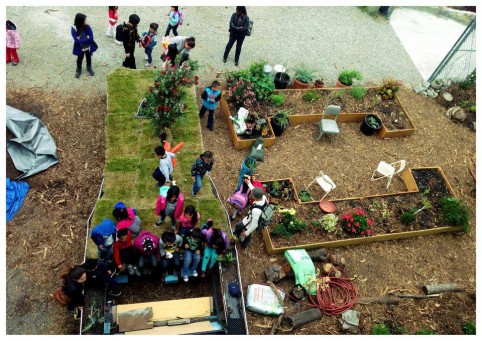
The [freespace] Model
This is actually a key difference from the way the Burning Man Org operates. Institutional memory is preserved at Burning Man because of the many founders and veterans still working on it year after year. Even though the values are the same in Black Rock City and [freespace], the organizational models to keep them going are different beasts. There’s one other obvious difference: [freespace] doesn’t sell tickets.
In fact, the funding model behind [freespace] is pretty radical. It started off on a pretty typical Silicon Valley path, but it diverged quickly. It was born out of the National Day of Civic Hacking with the backing of Innovation Endeavors, the Silicon Valley venture capital firm behind that day of techie programming. Zuckerman was working there at the time. He based the [freespace] notion of benevolent hacking of urban space on its values. But the plan wasn’t outcome-driven enough for Innovation Endeavors, so they pulled the funding. Fortunately, [freespace] found a haven with ReAllocate, a non-profit that enabled them to pull it off without old-fashioned VC money.
Now each [freespace] has to patch together its own funding model, but it’s starting to have interesting results. Landlords are donating spaces and even asking to be publicly associated with the project, and nearby businesses are starting to donate money in order to bring the healthy activity to the neighborhood. [freespace] wants to move toward that kind of organic support and away from grants and such.
“I think landlords are open to it because we’re not making anything off of it,” Zuckerman says. If there were commercial aims, [freespace]s surely wouldn’t get the spaces for free. But this “permission engine” model includes the landowners since [freespace] lets them act as participants. “It’s really important that we’re aligning with what the building owners’ desires are,” says Zuckerman.
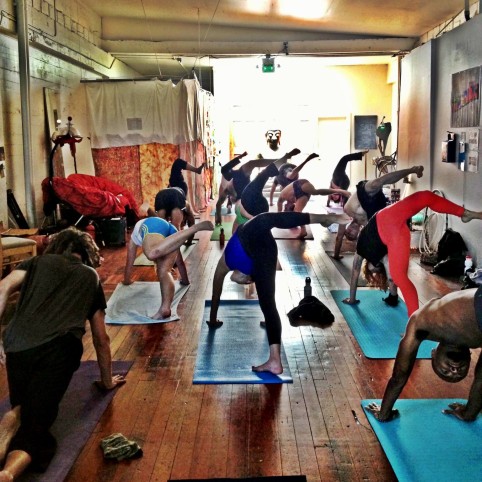
Like Burning Man, [freespace] as a container is apolitical. But at the same time, it’s an apt fit for this tumultuous time in history. Economic protests around the world show clear dissatisfaction with the status quo. “Governments see that society needs a release,” Zuckerman says, and permission engines like [freespace] can provide one. So cities have gotten behind this model of civic hacking. This is an opportunity to make change from within. So Zuckerman and the many other [freespace] founders around the world invite you to check out your local [freespace] if there is one and start one if there isn’t. They could use your help, so stop by this month and see what they need.
You can find all the info you need at freespace.io.
All photos courtesy of [freespace]

